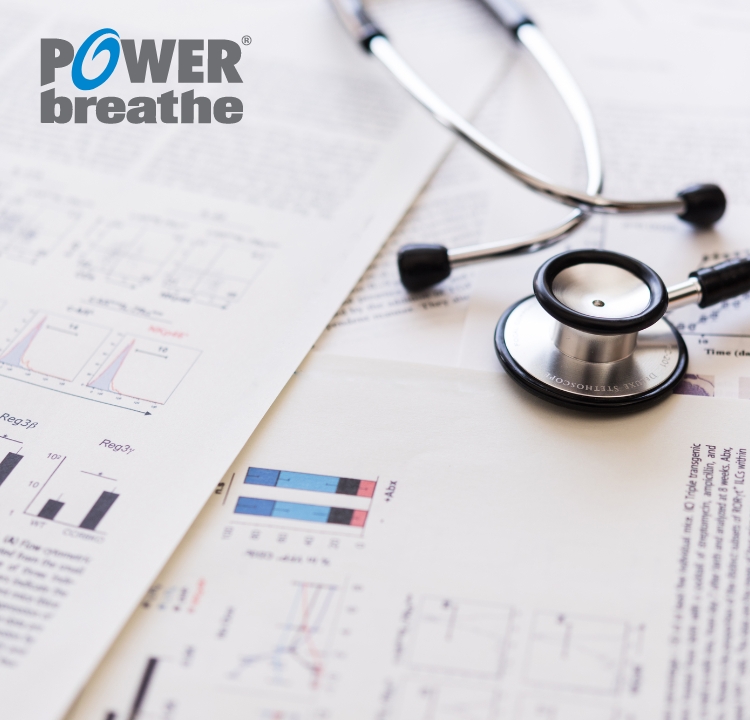-
パワーブリーズ メディックはどのように NHSの資金と資産を年総利益として節約するか
POWERbreathe® Medic
How POWERbreathe Medic will save the NHS money and resources as a gross operating gain per annum.
論文へ
-
閉塞性肺疾患に対する呼吸筋トレーニング:実施方法と期待すること
Alison Mcconnell, Lee M Romer and Perry Weiner
Educational aims
To provide an overview of the role of respiratory muscle function in the genesis of dyspnoea.
To describe the response of inspiratory muscles to different types of training stimuli.
To offer guidance on the implementation and monitoring of IMT.
Summary
Dyspnoea is strongly influenced by respiratory muscle function. Patients with obstructive lung disease become hyperinflated and experience an associated functional deficit in inspiratory muscle function, as well as a concomitant increase in the work of breathing.
These changes result in a heightened sense of respiratory effort and a propensity for inspiratory muscle fatigue. There is now convincing evidence that specific inspiratory muscle training (IMT) improves respiratory muscle function, reduces dyspnoea and improves exercise tolerance. This review will describe the two most commonly implemented methods of IMT, and the specific functional adaptations that are elicited by each.
It will also describe successful, evidence-based implementation and monitoring of the most commonly used method of IMT."
論文へ
-
吸気筋トレーニングの特異性と可逆性
Romer LM1, McConnell AK.
PURPOSE:
The purpose of this study was to evaluate the pressure-flow specificity of adaptations to inspiratory muscle training (IMT), in addition to the temporal effects of detraining and reduced frequency of training upon these adaptations.
METHODS:
Twenty-four healthy subjects were assigned randomly to one of four groups (A: low-flow-high-pressure IMT; B: high-flow-low-pressure IMT; C: intermediate flow-pressure IMT; and D: no IMT). Subjects performed IMT 6 d.wk(-1) for 9 wk, and inspiratory muscle function was evaluated at baseline and every 3 wk. Groups A, B, and C were then assigned randomly to either a maintenance group (M) (IMT 2 d.wk(-1) ) or a detraining group (DT) (no IMT). Inspiratory muscle function was reassessed at 9 and 18 wk post-IMT.
RESULTS:
At 9 wk, group A exhibited the largest increase in pressure, B a large increase in flow, C more uniform increases in pressure and flow, and D no changes in pressure or flow. Maximum inspiratory muscle power increased in groups A, B, and C by 48 +/- 3%, 25 +/- 3%, and 64 +/- 3%, respectively (mean +/- SEM, P < or = 0.01). Maximum rate of pressure development increased in groups A, B, and C by 59 +/- 1%, 10 +/- 1%, and 29 +/- 1%, respectively ( P < or = 0.01). A decrease in inspiratory muscle function was observed at 9 wk post-IMT in DT. Inspiratory muscle function plateaued between 9 and 18 wk but remained above pre-IMT values. Group M retained the improvements in inspiratory muscle function.
CONCLUSION:
These data support the notion of pressure-flow specificity of IMT. Detraining resulted in small but significant reductions in inspiratory muscle function. Reducing training frequency by two thirds allowed for the maintenance of inspiratory muscle function up to 18 wk post-IMT.
PMID: 12569211 DOI: 10.1249/01.MSS.0000048642.58419.1E
論文へ
-
健常者を対象に、肺容量、横隔膜厚、および運動能力に対する高強度吸気筋トレーニングの効果。
Enright SJ, Unnithan VB, Heward C, Withnall L and Davies DH.
BACKGROUND AND PURPOSE:
Previous investigations have demonstrated that a regimen of high-intensity inspiratory muscle training (IMT) resulted in changes in ventilatory function and exercise capacity in patients with chronic lung disease, although the effect of high-intensity IMT in subjects who are healthy is yet to be determined. The purpose of this study, therefore, was to examine whether high-intensity IMT resulted in changes in ventilatory function and exercise capacity in subjects who were healthy.
SUBJECTS:
Twenty subjects were randomly assigned to 2 groups.
METHODS:
The training group completed an 8-week program of IMT set at 80% of maximal effort. The control group did not participate in any form of training. Baseline and posttraining measures of body composition, pulmonary function, inspiratory muscle function (including maximal and sustained maximal inspiratory pressures [MIP and SMIP]), relaxed and contracted diaphragm thickness and thickening ratio (Tdi.rel, Tdi.cont, and TR), and exercise capacity were determined.
RESULTS:
The training group demonstrated significant increases in MIP, SMIP, Tdi.cont, TR, VC, total lung capacity, and exercise capacity compared with the control group, which demonstrated no change from baseline measurements at 8 weeks.
DISCUSSION AND CONCLUSION:
The findings of this study suggest that high-intensity IMT results in increased contracted diaphragm thickness and increased lung volumes and exercise capacity in people who are healthy.
PMID: 16506871
論文へ
-
慢性気流制限における呼吸筋トレーニング:運動パフォーマンスへの影響
Lisboa C1, Villafranca C, Leiva A, Cruz E, Pertuzé J and Borzone G
The effect of inspiratory muscle training (IMT) on exercise capacity in patients with chronic airflow limitation (CAL) has been debated. The present study was planned to further investigate the effects of IMT on exercise performance. Twenty patients (aged 62+/-1 yrs; forced expiratory volume in one second/forced vital capacity (FEV1/FVC) 36+/-2%) were trained 30 min daily for 6 days a week during 10 weeks, with either 30% (Group 1) or 10% (Group 2) of peak maximal inspiratory pressure (PI,max) as a training load. Exercise performance was evaluated by the distance walked in 6 min (6MWD) and by changes in oxygen consumption (V'O2) and minute ventilation (V'E) during a progressive exercise test. Changes in PI,max and dyspnoea were also measured. Results showed a significant increment in peak PI,max in both groups, whereas dyspnoea and 6MWD improved only in Group 1 (p<0.05 and p<0.01, respectively). No increment in maximal workload or in peak V'O2 was observed in either group. Patients in Group 1, however, showed a reduction in V'E and V'O2 for the same exercise. A correlation between changes in V'E and V'O2 during a workload of 75 kpm x min(-1) was observed in Group 1 (r=0.92; p<0.001). We conclude that inspiratory muscle training using a load of 30% peak maximal inspiratory pressure, improves dyspnoea, increases walking capacity and reduces the metabolic cost of exercise.
PMID: 9072981
論文へ

